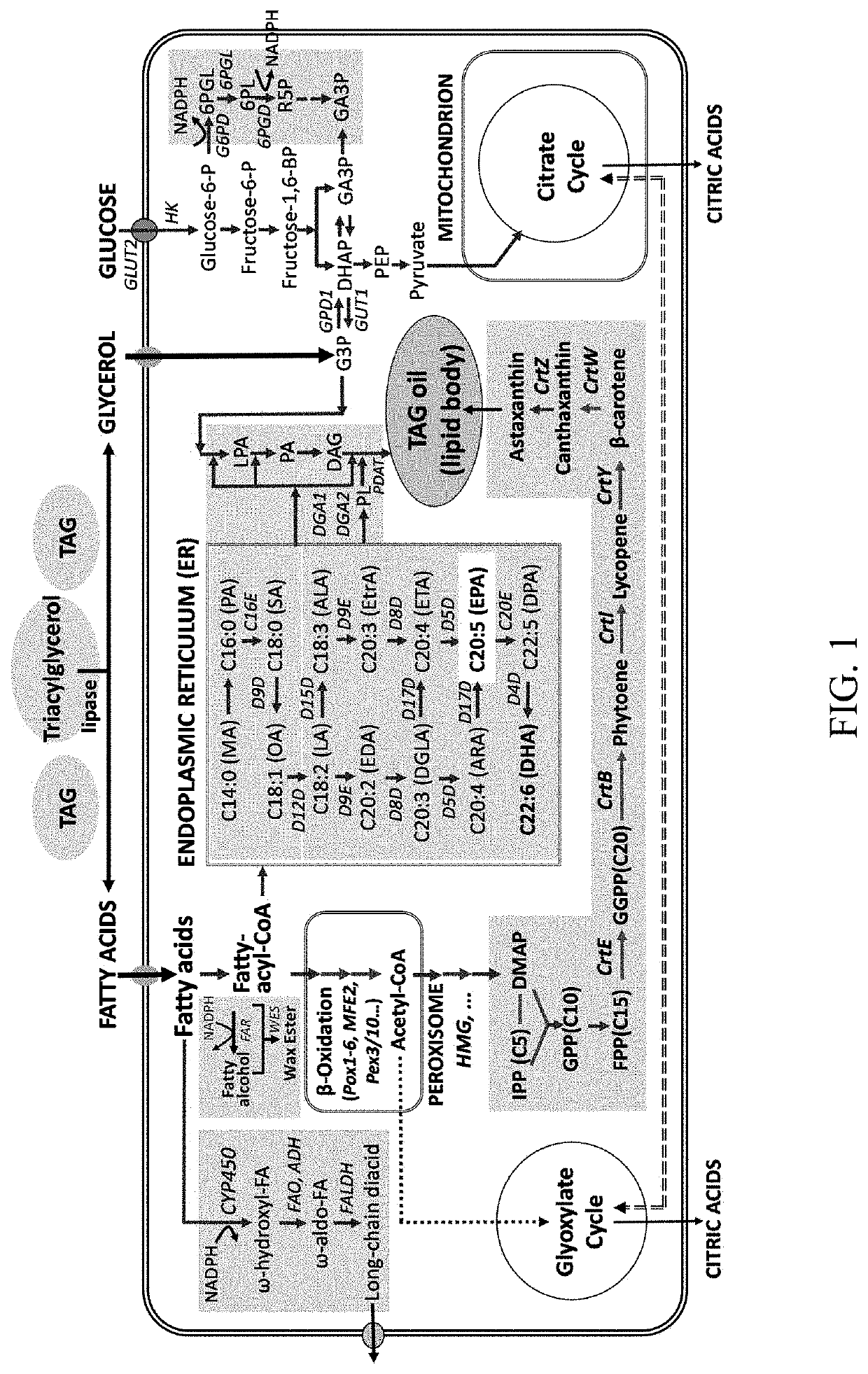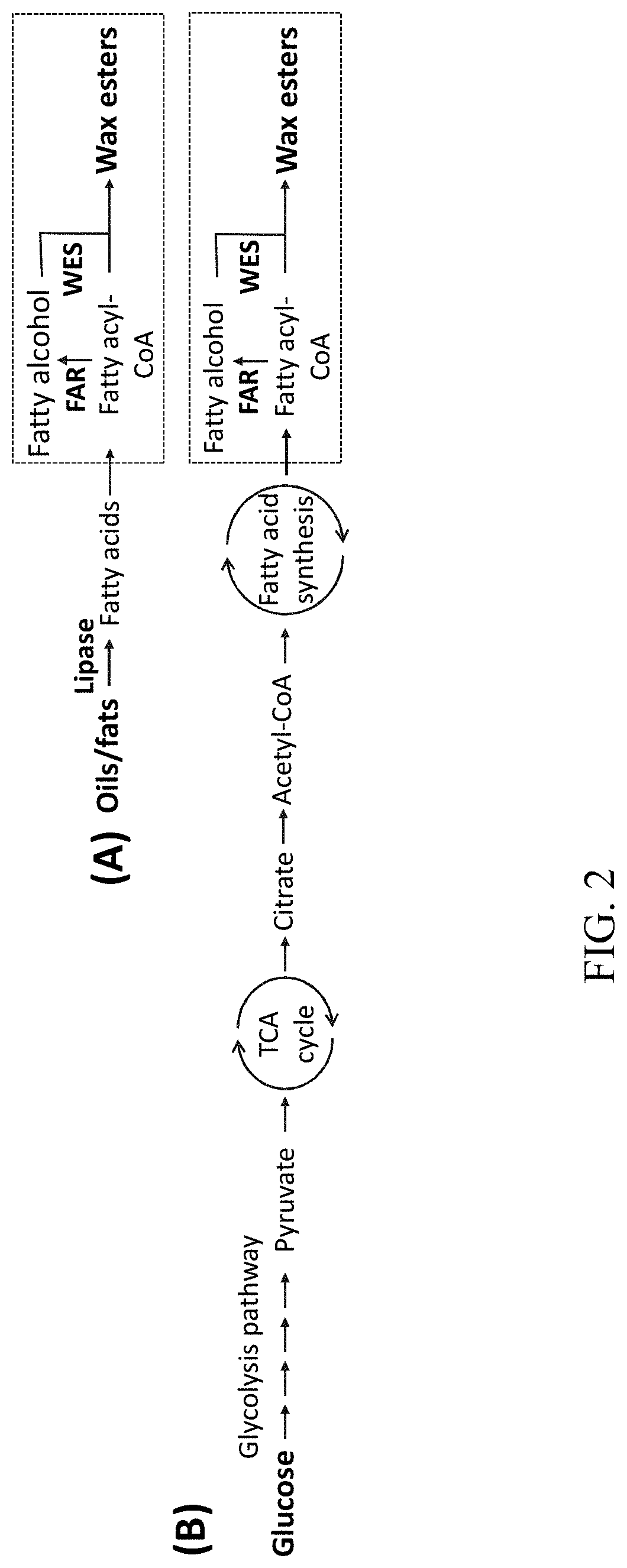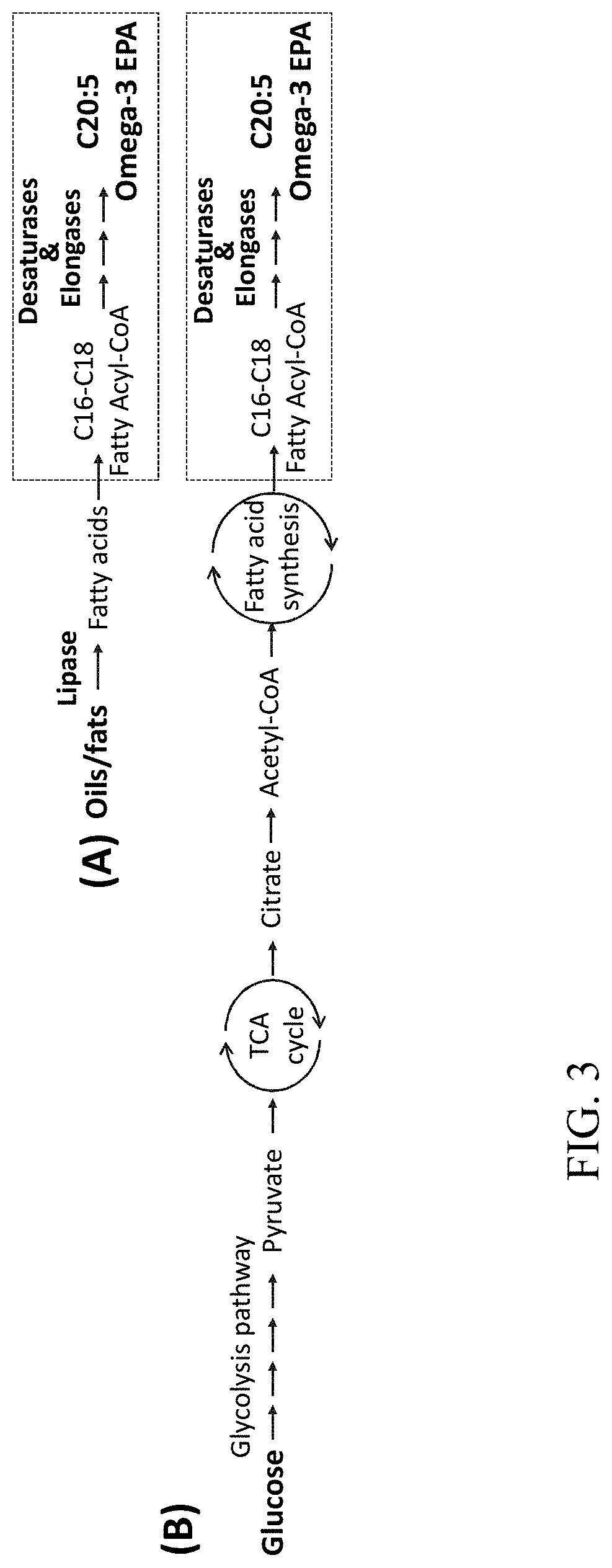Microbial conversion of oils and fats to lipid-derived high-value products
a technology of lipid-derived products and conversion methods, applied in the direction of acyltransferases, enzymology, transferases, etc., can solve the problems of serious pollution, millions of tons of waste cooking oils and fats generated, and primarily used for food, feed or nutritional applications with low or limited economic valu
- Summary
- Abstract
- Description
- Claims
- Application Information
AI Technical Summary
Benefits of technology
Problems solved by technology
Method used
Image
Examples
example 6
Conversion of TAG Oils into Omega-3 Eicosapentaenoic Acid (EPA)
Methods
[0087]Seed culture: The seed vials of Y. lipolytica strain Y8412 stored at −80° C. were thawed for 10 min at room temperature. Inocula were prepared by transferring a 0.5 mL vial solution to a 250 mL shake flask containing 50 mL seed culture medium, which consisted of Bacto™ yeast extract (5 g / L), KH2PO4 (6.0 g / L), Na2HPO4 (2.0 g / L), D-Glucose (20.0 g / L). The seed cells were grown in shake flasks for 18-24 h at 30° C., 280 rpm in a New Brunswick G25 Shaker Incubator until an OD600 of 2-5 was reached. The seed culture was used to inoculate the 1-L fermentor at 5-7% (v / v).
[0088]Fed-batch fermentation: The shake-flask seed culture (50 mL, OD600=2-5) was transferred to a 1-L fermentor (Biostat B-DCU, Sartorius, Germany) to initiate the fermentation (t=0 h). The initial fermentation medium was 0.7 L and contained Bacto™ yeast extract (12.0 g / L), (NH4)2SO4 (9.0 g / L), KH2PO4 (6.0 g / L), Na2HPO4 (2.0 g / L), D-Glucose (50.0 ...
example 7
lycerol to Help Convert FFA EPA into TAG EPA
[0103]In the new fermentation experiment glycerol was used to completely replace glucose as the main carbon source to support cell growth and maintenance. The initial glycerol concentration in the medium was 20 g / L. After the initial glycerol was consumed, which was indicated by a quick increase in pO2, a quick decrease in agitation speed, and a slow increase in pH value. Glycerol was fed to maintain its residual concentrations at around 10 g / L. Co-feeding WCO and lipase started from 36 h. A total of 20 mL WCO was fed in three pulses at 36 h (10 mL), 48 h (5 mL) and 72 h (5 mL), respectively. Lipase was also fed together with WCO at a ratio of 0.02 g lipase / mL WCO. As shown in FIG. 18 (A-D), a DCW of 37.0 g / L, a total EPA titer of 6.8 g / L, and a TFAs titer of 17.4 g / L were obtained at 144 h. Although, the total EPA and TFA production slightly decreased as compared to the fermentation with glucose and WCO plus lipase, the percentage of TAG ...
PUM
| Property | Measurement | Unit |
|---|---|---|
| Acidity | aaaaa | aaaaa |
Abstract
Description
Claims
Application Information
 Login to View More
Login to View More - R&D
- Intellectual Property
- Life Sciences
- Materials
- Tech Scout
- Unparalleled Data Quality
- Higher Quality Content
- 60% Fewer Hallucinations
Browse by: Latest US Patents, China's latest patents, Technical Efficacy Thesaurus, Application Domain, Technology Topic, Popular Technical Reports.
© 2025 PatSnap. All rights reserved.Legal|Privacy policy|Modern Slavery Act Transparency Statement|Sitemap|About US| Contact US: help@patsnap.com



